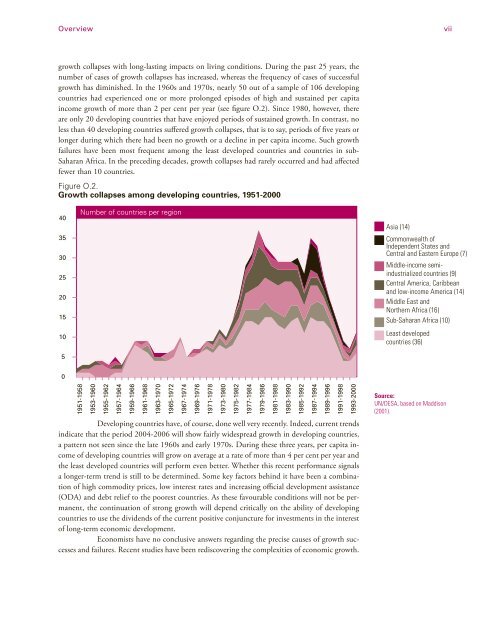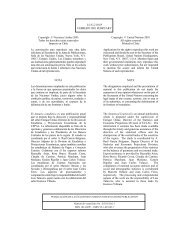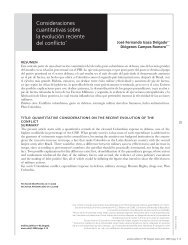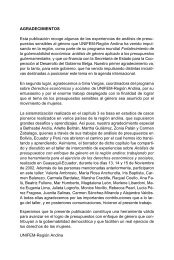Diverging Growth and Development - Biblioteca Hegoa
Diverging Growth and Development - Biblioteca Hegoa
Diverging Growth and Development - Biblioteca Hegoa
Create successful ePaper yourself
Turn your PDF publications into a flip-book with our unique Google optimized e-Paper software.
Overview<br />
growth collapses with long-lasting impacts on living conditions. During the past 25 years, the<br />
number of cases of growth collapses has increased, whereas the frequency of cases of successful<br />
growth has diminished. In the 1960s <strong>and</strong> 1970s, nearly 50 out of a sample of 106 developing<br />
countries had experienced one or more prolonged episodes of high <strong>and</strong> sustained per capita<br />
income growth of more than 2 per cent per year (see fi gure O.2). Since 1980, however, there<br />
are only 20 developing countries that have enjoyed periods of sustained growth. In contrast, no<br />
less than 40 developing countries suff ered growth collapses, that is to say, periods of fi ve years or<br />
longer during which there had been no growth or a decline in per capita income. Such growth<br />
failures have been most frequent among the least developed countries <strong>and</strong> countries in sub-<br />
Saharan Africa. In the preceding decades, growth collapses had rarely occurred <strong>and</strong> had aff ected<br />
fewer than 10 countries.<br />
Figure O.2.<br />
<strong>Growth</strong> collapses among developing countries, 1951-2000<br />
40<br />
35<br />
30<br />
25<br />
20<br />
15<br />
10<br />
5<br />
0<br />
1951-1958<br />
Number of countries per region<br />
1953-1960<br />
1955-1962<br />
1957-1964<br />
1959-1966<br />
1961-1968<br />
1963-1970<br />
1965-1972<br />
1967-1974<br />
1969-1976<br />
1971-1978<br />
Developing countries have, of course, done well very recently. Indeed, current trends<br />
indicate that the period 2004-2006 will show fairly widespread growth in developing countries,<br />
a pattern not seen since the late 1960s <strong>and</strong> early 1970s. During these three years, per capita income<br />
of developing countries will grow on average at a rate of more than 4 per cent per year <strong>and</strong><br />
the least developed countries will perform even better. Whether this recent performance signals<br />
a longer-term trend is still to be determined. Some key factors behind it have been a combination<br />
of high commodity prices, low interest rates <strong>and</strong> increasing offi cial development assistance<br />
(ODA) <strong>and</strong> debt relief to the poorest countries. As these favourable conditions will not be permanent,<br />
the continuation of strong growth will depend critically on the ability of developing<br />
countries to use the dividends of the current positive conjuncture for investments in the interest<br />
of long-term economic development.<br />
Economists have no conclusive answers regarding the precise causes of growth successes<br />
<strong>and</strong> failures. Recent studies have been rediscovering the complexities of economic growth.<br />
1973-1980<br />
1975-1982<br />
1977-1984<br />
1979-1986<br />
1981-1988<br />
1983-1990<br />
1985-1992<br />
1987-1994<br />
1989-1996<br />
1991-1998<br />
1993-2000<br />
vii<br />
Asia (14)<br />
Commonwealth of<br />
Independent States <strong>and</strong><br />
Central <strong>and</strong> Eastern Europe (7)<br />
Middle-income semiindustrialized<br />
countries (9)<br />
Central America, Caribbean<br />
<strong>and</strong> low-income America (14)<br />
Middle East <strong>and</strong><br />
Northern Africa (16)<br />
Sub-Saharan Africa (10)<br />
Least developed<br />
countries (36)<br />
Source:<br />
UN/DESA, based on Maddison<br />
(2001).
















